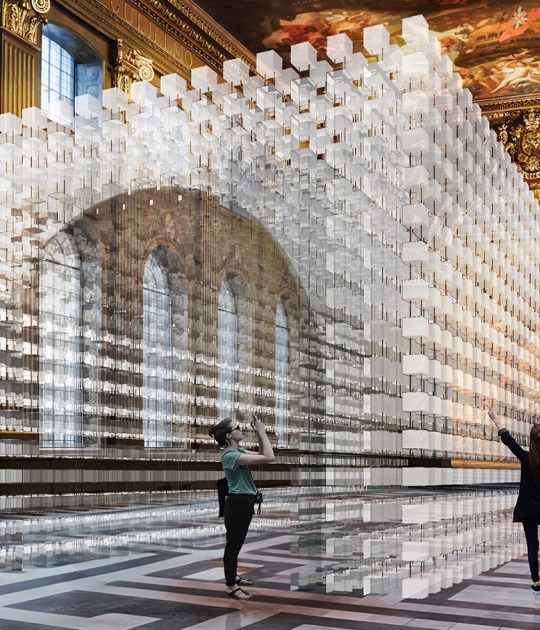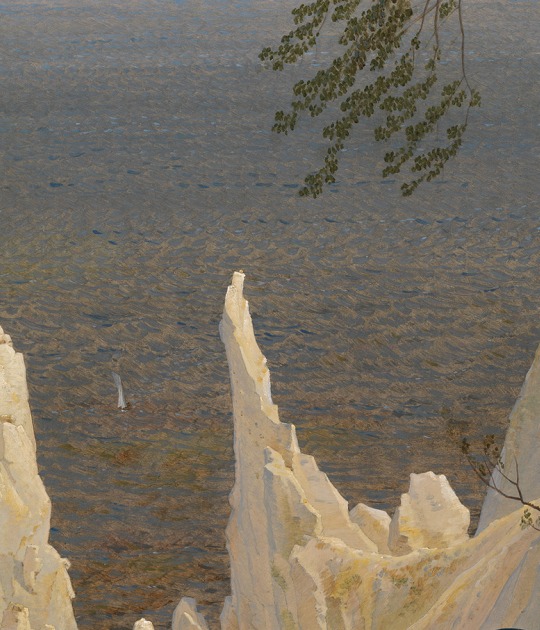With the perception epicenter of work that developed over five decades and across a wide range of disciplines, color and language are the priority instruments Rémy Zaugg used in about 130 pieces on display in the Palacio de Velázquez in the Retiro Park. In them, the artist recovers the painting itself as a research tool and transformation linked to perceptual speculation.
Thus, the production of Zaugg could be perceived, at the same time as the last step in the statement of the autonomy of the art work and as one of the first in the attempt to establish a new relational horizon between the art work and the viewer. In this regard and based on the idea that without the perception there is no work of art, Zaugg was also delved into fields such as urban planning, architecture and museology to analyze the participation of painting in different areas and to reflect on how and where public exhibition of works of art are.
The exhibition, result of close collaboration between the Museo Reina Sofía and the Museum für Gegenwartkunst in Siegen (Germany), revises a work that the artist focused on the study of perception, in the relationship between text and images, including color and language, between the real and the subjective, being the plane and space.
The soul of the exhibition
The right wing of the central area of the Palacio de Velázquez shows, in a semi-enclosed nucleus can be considered the soul of the exhibition, 27 perceptive sketches of a painting (1963-1968), a series of 51 pieces that is a detailed breakdown of elements of a reproduction of the painting the house of the hanged (1872- 73), Cezanne.
27 perceptive sketches of a painting is not a re-representation or a copy of the work of the painter from Aix from his Impressionist period. Nor is it, as the Commissioner Javier Hontoria in the exhibition catalog, a work on Cézanne but on the Zaugg himself looking at Cézanne in which all elements of the picture are analyzed from multiple viewpoints. The artist made 27 drawings, but the number 23 was broken off in another 25 drawings.
An analysis of the act of looking
The series 27 perceptive sketches of a painting is surrounded in the Palace by a selection of 18 paintings of another monumental series, A sheet of paper (1973-1989), exhibition evoking other provisions such as, for example, the sample itself by the Zaugg Museum Folkwang in Essen (Germany) in 1989.
A sheet of paper follows the same parameters as the sketches -but not as specifically- and so is a perceptive analysis of the nature of the act of looking. It is sheets of paper in which the artist makes sketches and notes as if you were running an analysis of why real time. If the sketches painting transforms language, A sheet of paper is a common support for painting and writing.
Identification between painting and writing
The identification between painting and writing will reach an unprecedented level in the mid-eighties, with two new groups of works For a picture and A word - a support, started around the same time and with similar formal characteristics in appearance but radically different in its further approach . An essential element breaks into the libretto Zaugg: typography.
The 90
The 90's mark an important turning point in the work of Zaugg as it breaks decisively color and language experience an unprecedented mannerism whenever industrial production consolidates over conventional pictorial practices.
Through three major groups of works that would work almost until his death in 2005, Blindness (1994-1997), The world sees (1993-2000) and Death (1998-2002 / 2005), language and color into a fantasy ambivalent territory of interrelationships. The language leaves its schematic and fragmentary nature and starts flirting, with greater or lesser intensity, with poetry.



























